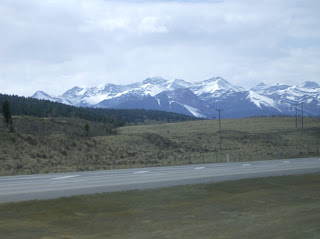




The first part of my hike today took me to the Cave and Basin National Historic Site. This is the area where William McCardell and Frank McCabe first discovered the hot springs while working on the CPR. As I said in a previous post, McCardell and McCabe tried to lay claim to the land in 1883 but eventually John A. Macdonald and the new Canadian government stepped in and reserved the land around the Cave and Basin hot springs, creating Canada’s first national park and the third in the world. There is a large naturally occurring pond and there was also a pool built, both are fed by the hot springs. The pond in the rock beside the main building is known as the “basin”.
The “cave” is located behind the Cave and Basin building, beside a boardwalk that leads you around a few ponds and streams fed with the spring water. The “cave” itself is a hole in the ground with steam coming out, as seen above. You can’t see much of the steam in the picture, but there was enough heat coming out of there to make me sweat after standing in front of it for a couple of minutes.
None of the ponds or pools photographed are open to the public. Many of the ponds by the boardwalk contain fragile wildlife like the Banff Springs Snail, but I am not sure why the pool down at the building isn’t still open.
On the trail leading up to the Cave and Basin you can see a small pond that is fed with the heated spring water. In the pond there are a few tropical fish as well as some species that have adapted to live in the hot spring water and are unique to Banff. It is an interesting habitat because the pond and the streams leading to it don’t freeze over in winter, which means it is warm all year round. The tropical fish were introduced in the 60s and 70s as a science experiment, and now compete with the natural species, some of which are now endangered.
I'll have a couple more posts tomorrow, coming up the Sundance Canyon and the Hoodoos.

















































